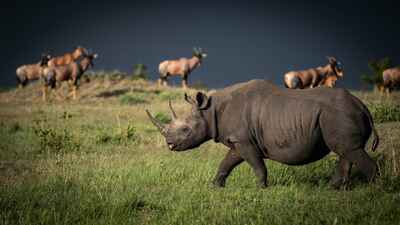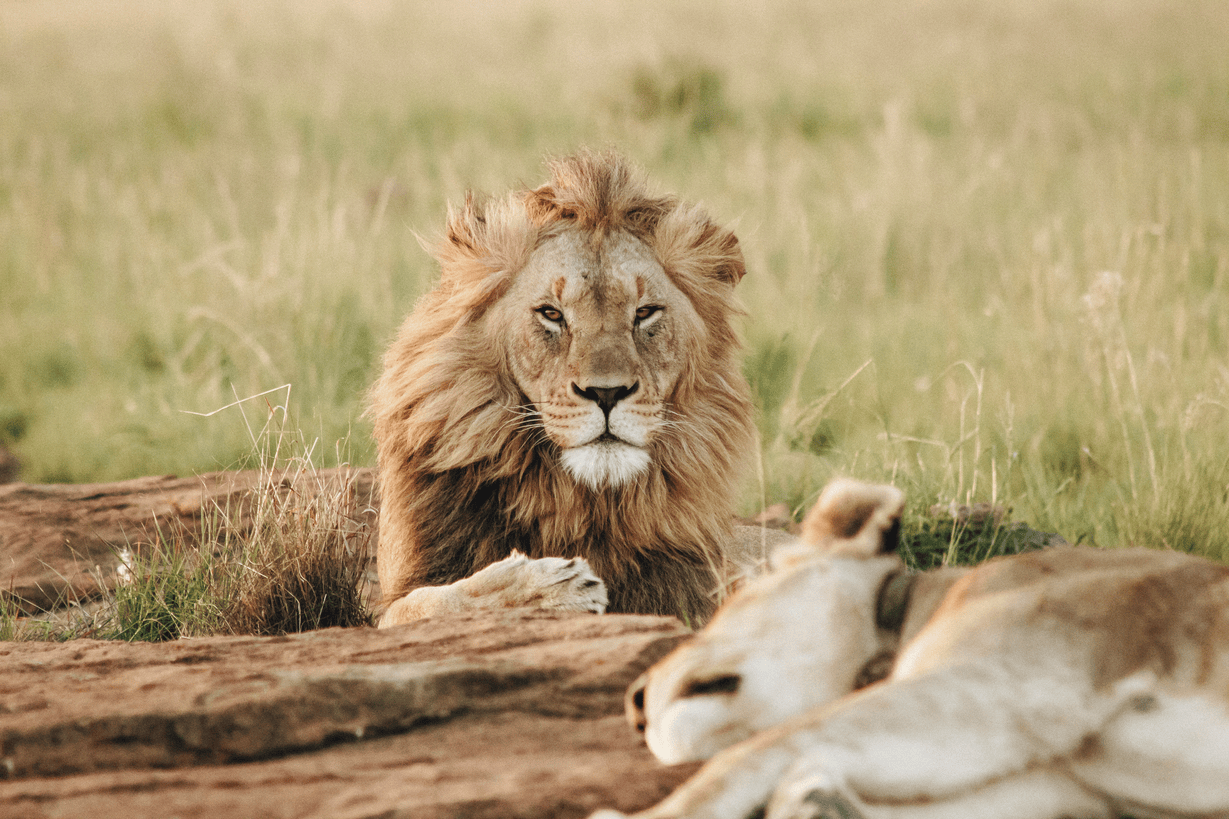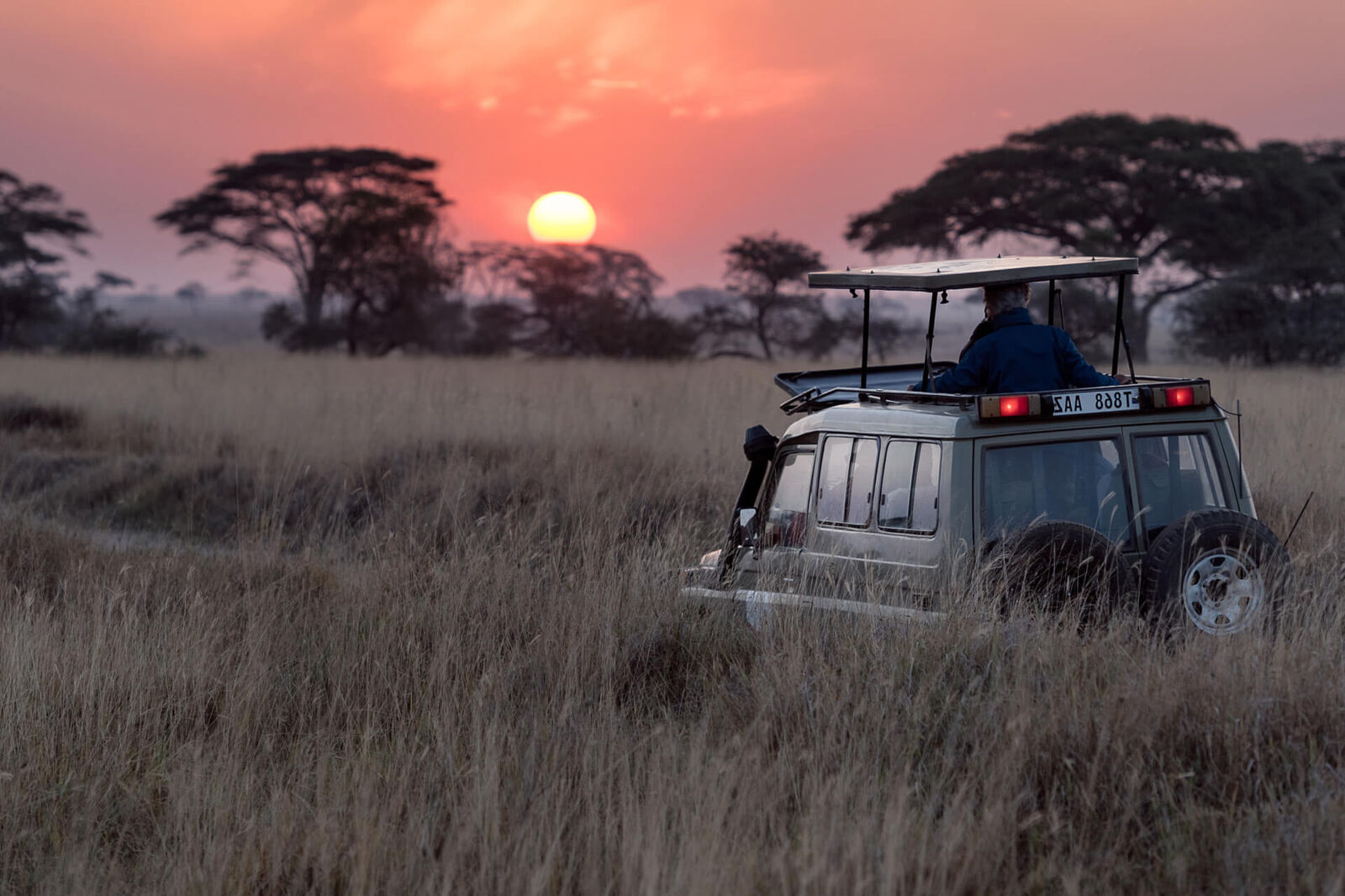Where to see Black Rhino in Malawi
The black rhino is the smaller and rarer of Africa’s two rhino species but has the more fearsome reputation. Shy and heavily persecuted, it tends to stick to cover.
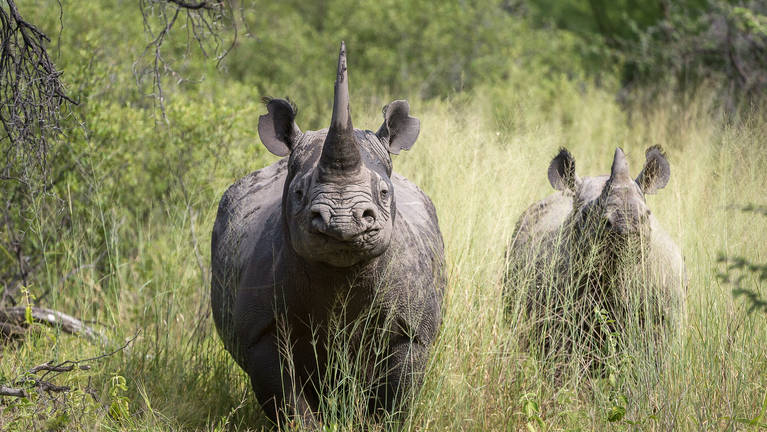
Quick facts about Black Rhino
| Scientific name: | Diceros bicornis | Habitat: | Scrub & open woodland |
|---|---|---|---|
| IUCN status: | Critically Endangered | Adult weight: | 800–1,400kg |
Black rhinos were once widespread in Malawi. During the 1980s, poaching took a heavy toll, and the last individual was killed in 1990 in Liwonde National Park. In 1993, two black rhinos were translocated to Liwonde from South Africa. The reintroduction process gathered steam in 2003, when African Parks took over management of Majete Wildlife Reserve, southwest of Liwonde. Five black rhinos were introduced here, alongside numerous other large mammals. In 2015, African Parks also took over Liwonde, and in 2019 they introduced 17 black rhinos in what was then the largest ever translocation of the species. The rhinos have since thrived in both reserves, with no poaching recorded in either. In 2003, Malawi’s total population stood at 56.
±5,500
Current population
1.3 m
Record horn length
50 km/h
Max. speed
16 months
Gestation period
The top camps for seeing black rhino in Malawi
Based on 2 reports by our travellers since Jul 2019, visitors at these camps in Malawi have the best chances of sighting black rhino.
Best chances to see
Good chances to see
Some sightings
No sightings yet
Best areas to see black rhinos in Malawi
Black rhinos occur in only a handful of protected areas in east and southern Africa. Your best chance of spotting one is at a waterhole or on foot with a tracker.
Malawi: black rhino hot spots
Today you are more likely to see a black rhino in Malawi than at any time in the last 50 years. To do so, you must visit either Liwonde National Park or Majete Wildlife Reserve, both in the south, where the species has been successfully reintroduced. Numbers are small – a little more than 50 in total – but increasing. Both reserves have been undergone impressive rehabilitation after decades of neglect, with a major reintroduction programme under African Parks seeing the likes of lion, cheetah and African wild dog returned to former haunts, alongside an upgrading of visitor facilities. Black rhinos are elusive, sticking largely to dense bush. Sightings are easiest during the September–November dry season, when they are most likely to visit waterholes.
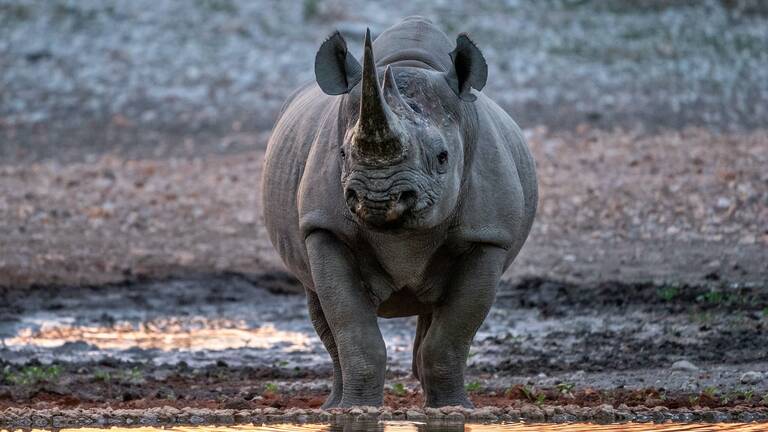
Our best Malawi holidays for black rhino sightings
Based on our travellers' reports, these ideas for Malawi safaris are likely to give the best black rhino sightings

More information about black rhino in our other destinations
Click here for detailed information about black rhino in other countries, including the places for sighting black rhino.
